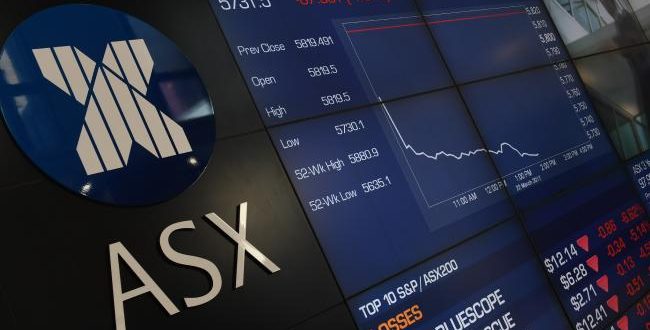The Australian market posted a steep fall on Tuesday, as investors hold their breath ahead of tomorrow’s GDP result and continue to weigh global political uncertainty.
At the close of trade the S&P/ASX 200 had dropped 1.5 per cent to close at the intraday low of 5667.5 points, marking its lowest level in four months. Out of the 50 largest stocks on the index by market capitalisation, 48 failed to post gains, (Qantas and Newcrest closed in the black) which caught analysts and market-watchers off guard.
“I am surprised at the severity of today’s fall,” Folkestone Maxim managing director Winston Sammut told The Australian. “Nothing in terms of market action offshore suggested that should be the case.”
“Looking at the sectors … there doesn’t seem to be anywhere that you could take refuge at this point, so it’s probably best to step back and wait and see.”
All sectors closed in negative territory, with energy and utilities stocks the hardest hit.
Commonwealth Bank lost 1.5 per cent to $78.15, Westpac gave up 1.4 per cent to $29.55, ANZ fell 1.6 per cent to $27.36 and NAB dropped 1.7 per cent to $29.27. Macquarie, meanwhile, slipped 2.3 per cent to $86.18.
Retailers Wesfarmers and Woolworths gave up around 1.5 per cent each, while Telstra fell 0.7 per cent to $4.45 and CSL lost 1.6 per cent to $130.10.
The materials sector gave up 1 per cent overall, with BHP Billiton falling 1.4 per cent to $23.34 and Rio Tinto losing 0.9 per cent to $61.47.
Trading volume was below the 20-day moving average for much of the session as investors take a “wait and see” approach to tomorrow’s GDP data.
“The upcoming GDP number may be frightening a few people at the moment,” Mr Sammut said. “We have seen a reasonable amount of buying from offshore in the last couple of months and that may be abating on the basis that the currency is at risk if the GDP number is not okay.”
The Australian Bureau of Statistics will release the March quarter national accounts at 11:30am (AEST) on Wednesday and both economists and the Reserve Bank are predicting a relatively weak set of numbers.
Economists surveyed by Bloomberg expect a 0.3 per cent rise on the quarterly figure and a gain of 1.6 per cent for the year-on-year, which would be the weakest rate of growth since 2009.
Reader comments on this site are moderated before publication to promote lively and civil debate. We encourage your comments but submitting one does not guarantee publication. We publish hundreds of comments daily, and if a comment is rejected it is likely because it does not meet with our comment guidelines, which you can read here. No correspondence will be entered into if a comment is declined.





